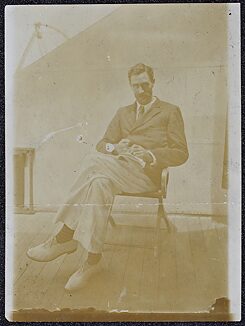The capture of Roger Casement
 Image Courtesy of the National Library of Ireland
Image Courtesy of the National Library of Ireland
Roger Casement landed on Banna Strand from a German U-boat on April 21st 1916. He was quickly captured by the British authorities and later hanged.
Casement, who was born in Dublin in 1864, is a key figure in the development of international human rights. In 1903, as a British consul, he investigated atrocities against indigenous peoples in the Congo who were being forced to collect rubber. In 1910, he conducted a similar investigation into atrocities by a rubber company against the Huitoto people of Peru. Although he was knighted by the British, his experiences turned him against imperialism and towards Irish nationalism.
After the outbreak of the first world war, Casement travelled to Berlin to seek German aid for an armed Irish uprising and attempted to recruit Irish prisoners of war. His efforts failed and he became disillusioned with German promises, but he eventually set sail, along with a ship carrying 20,000 rifles. The ship was intercepted and scuppered. Casement intended to warn the rebels not to go ahead with their planned rising, which he thought would be a disaster. His capture while hiding at McKenna’s Fort near the strand, led to confusion but the rising went ahead on a smaller scale in Dublin on Easter Monday 1916. Casement was charged with high treason and hanged in London on August 3rd.
Fintan O'Toole
Visitor Information
Casement Monument
at Banna Strand
Co. Kerry
IRELAND – IR